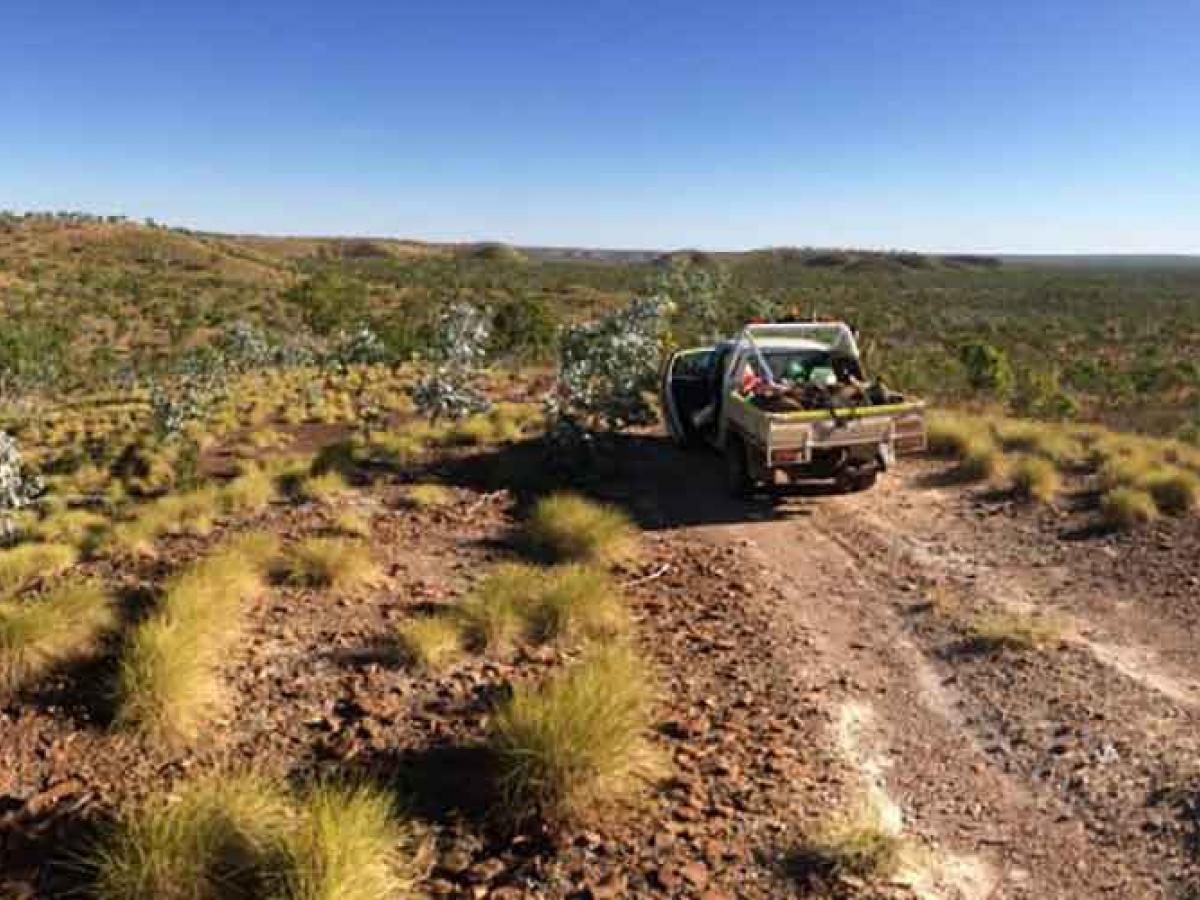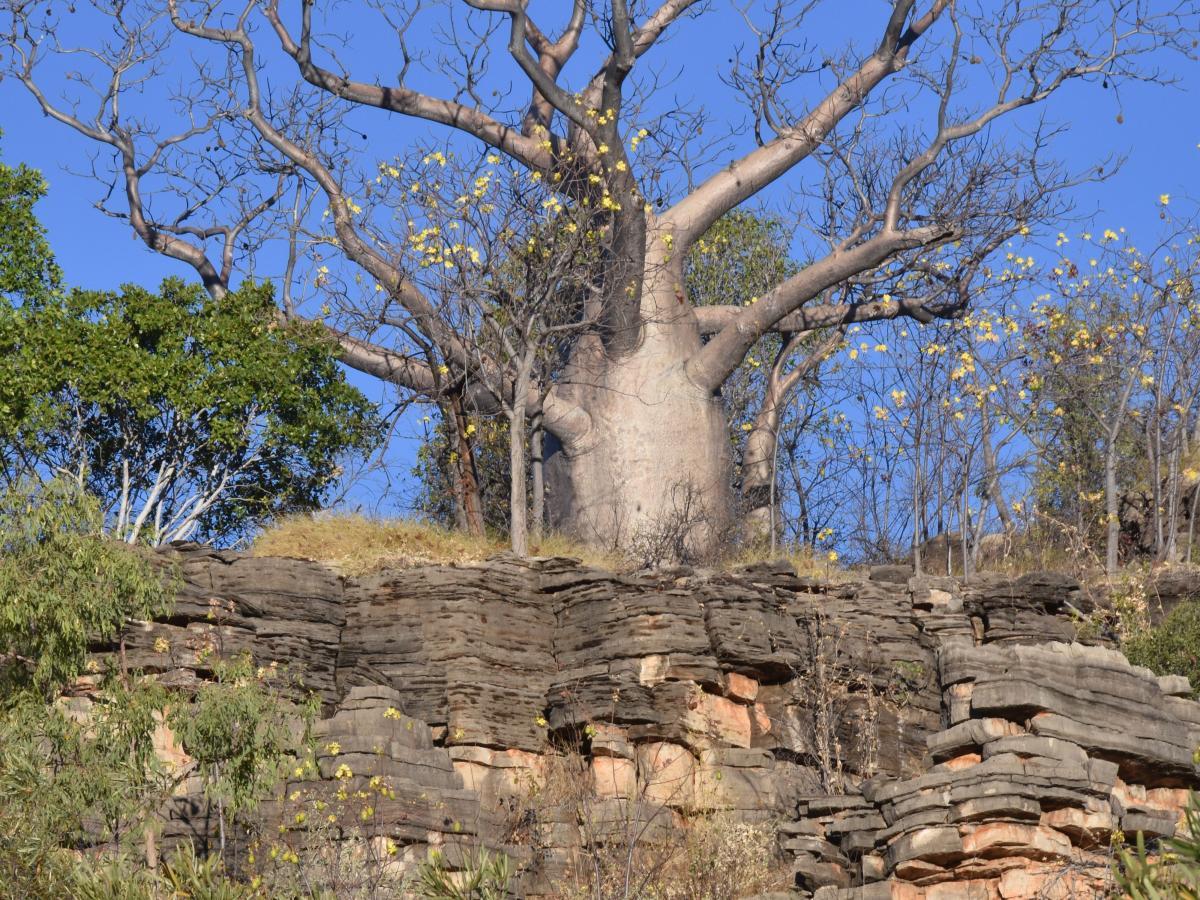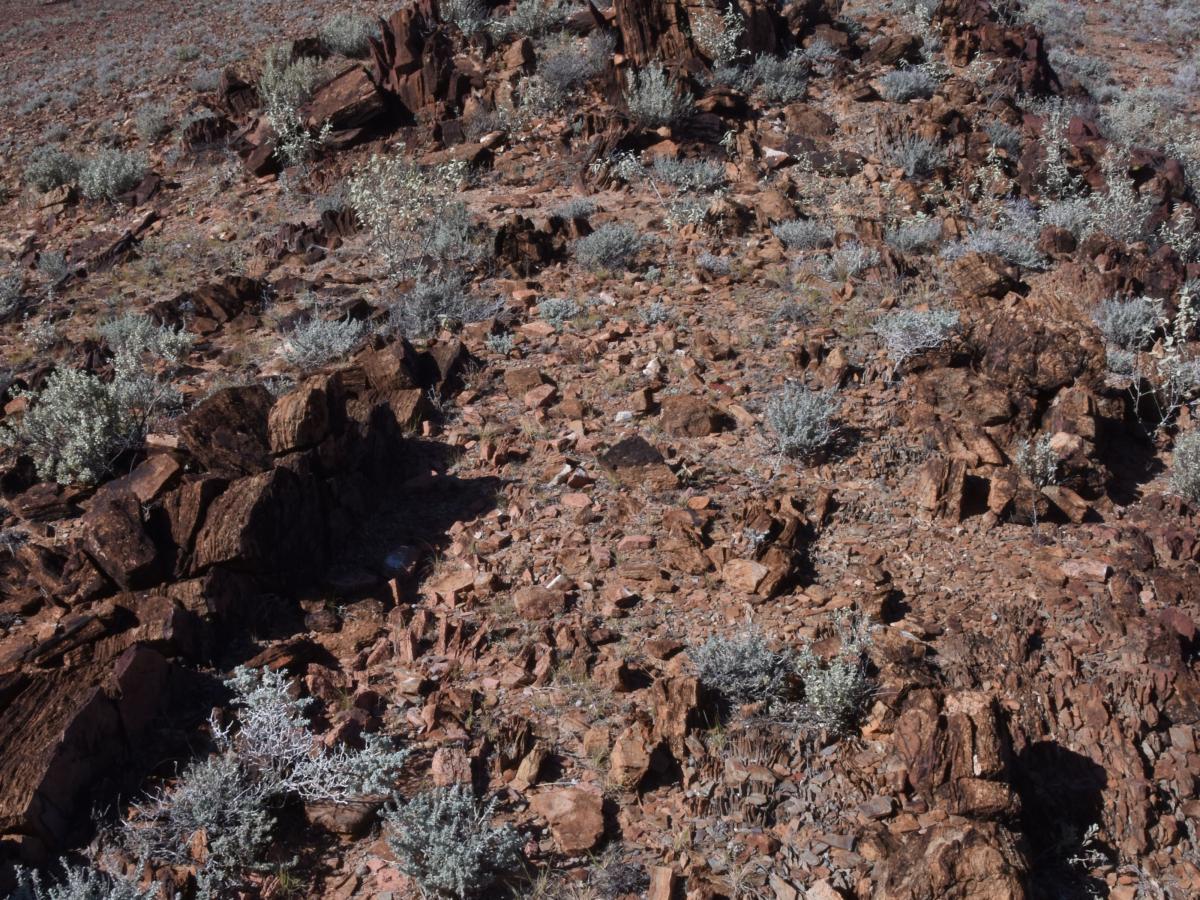Tectonics and Earth Systems
The Tectonics and Earth Systems (TES) Group explores how deformation of the solid earth over deep time built a human-habitable, resource-rich planet.

The Proterozoic Birrindudu Basin in remote northern Australia—we endeavour to explore deep time through understanding the rock record, wherever it is best preserved.
The Tectonics and Earth Systems Group is a part of the Mawson Centre for Geoscience and its research spans the Institute for Sustainability, Energy and Resources (ISER) and the Environment Institute.
TES Group members are geologists and geochemists, and our aim is to develop an evolving model of the world where every aspect is testable and mutable.
Research methodologies
We use geochronology, thermochronology, structural geology, geochemistry, igneous geology and sedimentology to unravel the tectonic geography of a region through deep time.
Our work is data focussed and built from the rock record. As such we work with geochemical proxies for tectonic processes, redox, salinity, productivity, erosion and hydrothermal activity, many of which are pioneering and developmental.
We are also investigating new, rapid, accurate dating techniques, such as laser-ablation analysis of Rb–Sr and K–Ca isotope systems via plasma mass spectrometry (see also our Metal Isotope Group) and are grappling with data analytical approaches to apply to the sizable and diverse data we generate and interpret.
Research aims
By combining these studies, we attempt to reconstruct the past continents and oceans of the world in a full plate-tectonic manner; focussing on the last 2 billion years of earth history, when we consider plate tectonics operated in a similar manner as it does today.
From these novel, full-earth, reconstructions we strive to quantify feedbacks between geosphere phenomena (such as mountain belt topographic evolution, ocean basin connectivity, and rift development), chemistry of the atmosphere/hydrosphere and the development of the biosphere.
Key research areas
- Constraining full-plate topological reconstructions of the world from 2 Ga to present using the global rock record
- Reconstructing ancient topography by deconvolving the rock record in ancient orogens and successor sedimentary basins
- Understanding the evolving tectonic setting, water chemistry, ecology and resource endowment of major Proterozoic and Palaeozoic Basins
- Deconvolving the tectonic complexity of pre-collision active margins in ancient orogens
- Understanding the solid earth controls on transitions in the supra-geosphere earth
- Developing novel laser-based isobaric geochronometers (e.g. Rb–Sr and K–Ca)
Projects

Boabs above carbonates of the greater McArthur Basin
-
Full plate tectonic reconstruction of the Neoproterozoic earth
Major Partners: Professor Dietmar Müller (University of Sydney), Dr Sergei Pisarevsky (Curtin University), Dr Simon Williams (Northwest University, China), Dr Andrew Merdith (Laboratoire de Géologie, Lyon, France), Prof Theodore Razakamanana (Toliara University, Madagascar), Dr Donnelly Archibald (St Francis Xavier University, Canada), Professor Chris Clark (Curtin University), Dr Tim Johnson (Curtin University)
Developed from Australian Research Council future fellowship FT120100340. -
Tectonic geography of the McArthur Basin, Northern Australia
Major partners: Northern Territory Geological Survey (NTGS), Santos Ltd, Origin Ltd, Imperial Oil and Gas, Todd River Resources, Associate Professor Anthony Dosseto (University of Wollongong), Professor Lukas Ackerman (Czech Academy of Sciences), Dr Marcus Kunzmann (CSIRO), Dr Amber Jarrett (Geoscience Australia), Professor Galen Halverson (McGill University, Canada)
Funded by: Australian Research Council Linkage Project LP160101353 with Origin, Santos, NTGS and Imperial Oil and Gas as industry partners, additional funding by Todd River Resources.

The base of the Bolla Bollana Tillite in Termination Valley, Willouran Ranges, Northern Flinders.
-
Unravelling the Flinders Ranges rocky cradle of life
Major partners: Geological Survey of South Australia, Nature Foundation of South Australia
Funded by: Geological Survey of South Australia, Nature Foundation of South Australia -
Metal isotope chemostratigraphy (Cr, Ca, Mg) and in-situ dating (Rb-Sr, K-Ca) of Proterozoic depositional systems in Australia
Major partners: MinEx CRC, Todd River Resources, Prof Thomas Zack (University of Gothenburg, Sweden), Associate Professor Anthony Dosseto (University of Wollongong)
Funded by: MinEx CRC, Todd River Resources -
Australian geological architecture and evolution: the national drilling initiative of the MinEx CRC
Major partners: Geoscience Australia , Geological Survey of New South Wales, Geological Survey of South Australia, Geological Survey of Western Australia
Funded by: MinEx CRC
People
-
TES group members
Current group members Past group members Professor Alan Collins Dr Grant Cox Dr Juraj Farkas Dr Romana Dew Dr Stijn Glorie Dr Brandon Alessio Dr Morgan Blades Dr Gilby Jepson Emeritus Professor John Foden Dr James Hall Dr Tony Hall Dr Justin Payne Ms Sheree Armistead Mr Bo Yang Ms Georgina Virgo Mr Venkata Pavan Katuru Mr Jarred Lloyd Mr Darwinaji Subarkah Mr Jack Gillespie Mr Ahmad Redaa -
Collaborators
Dr Thomas Zack University of Gothenburg, Sweden Prof Theodore Razakamanana Toliara University, Madagascar Prof Saibal Gupta IIT Kharagpur, India Prof Sarbani Patranabis-Deb ISI, Kolkata, India Prof Sajeev Gupta IISc Bangalore, India Prof Dietmar Müller University of Sydney Dr Sergei Pisarevsky Curtin University Dr Simon Williams Northwest University, China Dr Andrew Merdith Laboratoire de Géologie, Lyon, France Dr Donnelly Archibald St Francis Xavier University, Canada Prof Chris Clark Curtin University Dr Tim Johnson Curtin University Prof Fred Jourdan Curtin University Dr Christopher Morley PTTEP, Thailand Prof Renata Schmitt UFRJ, Rio de Janeiro, Brazil Prof Marly Babinski USP, São Paulo, Brazil Prof Ricardo Trindade USP, São Paulo, Brazil Prof Antonio Pedrosa-Soares UFMG, Belo Horizonte, Brazil Dr Pierre Sans-Jofre Université de Bretagne Occidentale, France Prof Yves Godderis Géosciences Environnement Toulouse - Observatoire Midi-Pyrénées, France Prof Yannick Donnedieu Centre Européen de Recherche et d'Enseignement des Géosciences de l'Environnement, Aix en Provence, France Dr Ashleigh Hood University of Melbourne Dr Maree Corkeron James Cook University Dr Marcus Kunzmann CSIRO -
Science communication
Articles by group members
- Jepson, G., Collins, A.S., Gillespie, J. 2018 How Eurasia’s Tianshan mountains set a stage that changed the world. The Conversation, November 2nd 2018.
- Collins, A.S. and Dew, R.C. 2018 When Thailand and Australia were closer neighbours, tectonically speaking. The Conversation, October 19th 2018.
- Foden, J. 2018 More than just a sparkling gem: what you didn’t know about diamonds. The Conversation, August 24th 2018.
- Collins, A.S. 2018 Curious kids: How do scientists work out how old the Earth is? The Conversation, 24th Jan 2018.
- Collins, A.S. Cox, G. and Yang B. 2017 What’s Australia made of? Geologically, it depends on the state you’re in. The Conversation, 21st Nov 2017.
- Cox, G. and Collins, A.S. 2017 Ancient volcanic eruptions disrupted Earth’s thermostat, creating a ‘Snowball’ planet. The Conversation, 13th Sept 2017.
- Cox, G. and Collins, A.S. 2017 A time capsule containing 118 trillion cubic feet of gas is buried in northern Australia. The Conversation, 11th July 2017.
- Collins, A.S, and Merdith, A.S. 2017 A map that fills a 500-million year gap in Earth’s history. The Conversation, 27th June 2017.
